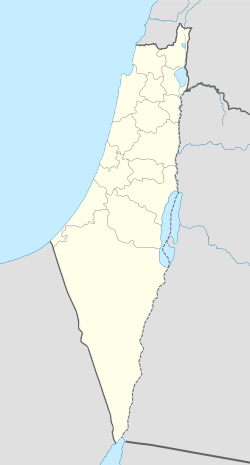Ottoman era
Khirbat al-Sawamir was incorporated into the Ottoman Empire in 1517 with all of Palestine, and in 1596 it appeared in the tax registers under the name of Sawamir, as being in the nahiya ("subdistrict") of Ramla, which was under the administration of the liwa ("district") of Gaza. It had a population of 3 household, [5] an estimated 17 persons, [6] who were all Muslims. They paid a fixed tax-rate of 25 % on agricultural products, including wheat, barley, summer crops, goats and beehives, in addition to occasional revenues; a total of 5,500 akçe. [5]
The village appeared, though misplaced, under the name of Sawama on the map that Pierre Jacotin compiled during Napoleon's invasion of 1799. [7]
In 1859, the population was estimated to be 120 persons, with 15 feddans of cultivated area. [8]
In 1882, the PEF's Survey of Western Palestine described Suamir as a small adobe village at the edge of the plain, with a well to the west. [8]
In the early twentieth century, travelers noted that the village was better built that the usual Fellahin village. [9]
1948, aftermath
Following the 1948 war the area was incorporated into the State of Israel. The moshav of Ofer was established in 1950 partly on the land of Khirbat al-Sawamir, and partly on the land of Ayn Ghazal. [3]
In 1992 the village site was described: "The ruins of two walls (formerly parts of a building) are visible at the site, which has been fenced in with barbed wire. Pine trees occupy much of the land on the site, and pomegranate and fig trees and cactuses are scattered throughout. The surrounding coastal lands are used by Israeli farmers for growing vegetables and fruit, particularly bananas." [3]





